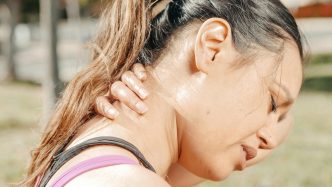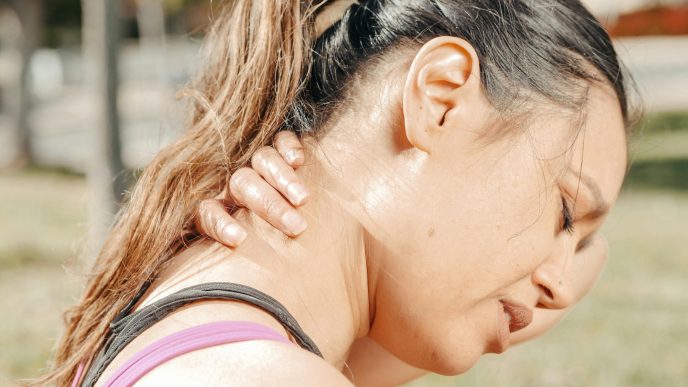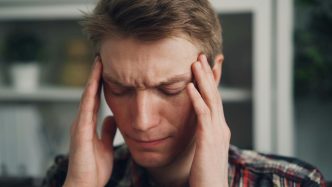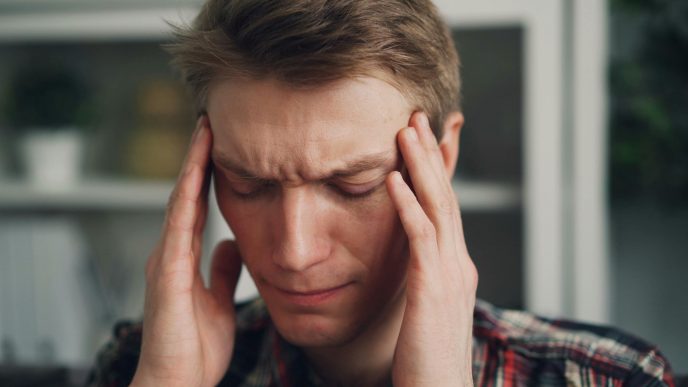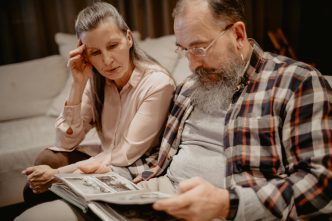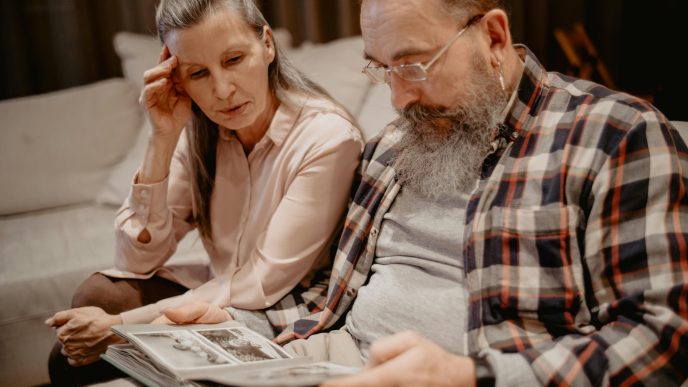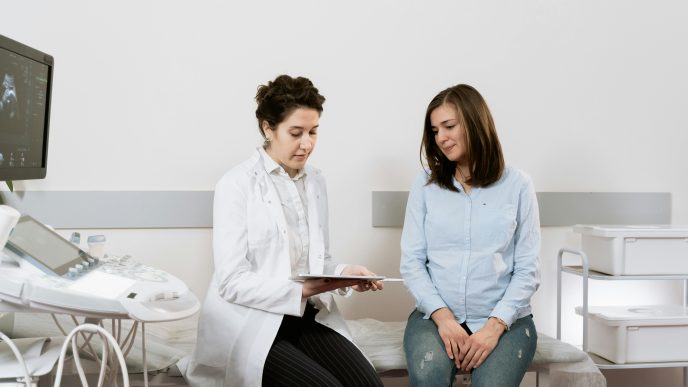Knowing the difference changes how you’re evaluated, what tests you need, and which treatments actually help — especially if you’re navigating polymyalgia rheumatica (PMR).
Why this distinction matters
Patients often use “stiff” and “weak” to describe the same miserable experience: struggling to get out of a chair, lift the arms, or climb stairs. But medically, stiffness and weakness point to different problems.
Stiffness is usually about reduced ease of movement — often worse after rest and better once you “warm up.” Weakness is about reduced force — muscles cannot generate normal power even when the joints feel loose enough to move. Sorting this out helps your clinician decide between inflammatory, mechanical, or neurologic causes and prevents you from chasing the wrong treatment.
What stiffness feels like
Stiffness is a tight, resistant feeling that limits range at the start of movement. People describe it as “rusted,” “frozen,” or “cement-like.” Pain may accompany it, but it doesn’t have to.
Typical features:
- Time pattern: worst after inactivity—first 30–60 minutes in the morning, after long drives, or after sitting. It often eases as you move.
- Location: commonly around joints or girdles (shoulders, hips), with a sense of tightness in the surrounding muscles.
- Range of motion: initially limited; improves as the day goes on.
- Strength testing: when your joint allows the position, your force is normal.
Common culprits include inflammatory conditions (like PMR), osteoarthritis, soft-tissue tightness, or post-exercise soreness.
What weakness feels like
Weakness is true loss of muscle power. The movement may be possible, but the force is low even when pain and stiffness are minimal.
Typical features:
- Time pattern: persistent throughout the day; not reliably better with movement.
- Location: can be proximal (shoulders/hips) or distal (hands/feet), sometimes asymmetric.
- Range of motion: the joint may move freely, but you can’t generate strength to hold or resist.
- Strength testing: when a clinician tests you, the muscle gives way despite effort.
Common culprits include neurologic problems (nerve root compression, neuropathy), myopathies (including steroid-induced), metabolic issues (thyroid, electrolytes), and severe deconditioning.
PMR in focus: why patients feel “weak” even when muscles are strong
In PMR, the signature complaint is pronounced morning stiffness in the shoulder and hip girdles, with aching that improves as you get moving.
Patients often say “I’m weak,” but formal strength testing is usually normal once pain and stiffness are accommodated. That perceived weakness comes from pain-guarding and limited leverage due to stiffness—not from failing muscle fibers.
Contrast that with steroid-induced myopathy, a complication of long-term or higher-dose prednisone. Here, stiffness is minimal, but true proximal weakness creeps in: difficulty rising from a chair without hands, climbing stairs, or lifting your arms overhead, and it doesn’t improve as you keep moving.
Quick self-checks you can try at home
These simple checks are not a diagnosis, but they help you notice patterns you can share with your clinician.
1) The “warm-up” test
After sitting 30 minutes, stand and walk down the hall.
- If the first steps feel tight and guarded, then ease within a few minutes, that supports stiffness.
- If you still can’t generate power after several minutes, think weakness.
2) Chair-rise observation
Use a standard chair (no armrests if safe).
- Stiffness pattern: first stand-up is hard; the third or fourth stand is easier.
- Weakness pattern: each attempt is equally hard; you may lean heavily on your thighs or need your arms every time.
3) Overhead reach vs. resisted hold
Try to comb your hair or place a light object on a shelf, then—if comfortable—ask someone to gently press down on your arms while you hold them up.
- Stiffness: getting the arms overhead may be limited at first but improves; resisted hold is strong once you’re positioned.
- Weakness: you can position the arms but cannot resist gentle downward pressure.
4) Grip and fine tasks
Open a jar, turn a key, button a shirt.
- If the trouble is mainly on the first attempt that improves as you repeat, then it is stiffness.
- If the trouble is every time, hands feel “powerless,” maybe with numbness or cramps, then it is weakness (or nerve involvement).
What clinicians look for during an exam
- Range of motion (ROM): Stiffness shows limited ROM at start that improves with gentle repetition; weakness shows full ROM but poor power.
- Strength grading: In stiffness, once positioned, strength is near normal; in weakness, strength is objectively reduced.
- Pain behavior: In stiffness, resistance is often due to pain-guarding; in weakness, resistance fails without severe pain.
- Gait and function: Stiffness causes a start-up gait that loosens; weakness produces a waddling or knee-collapse pattern that persists.
Common causes at a glance
- Primarily stiffness: PMR, osteoarthritis, inflammatory arthritis, post-exercise muscle tightness, tendon or bursal inflammation.
- Primarily weakness: Nerve compression/radiculopathy, peripheral neuropathy, myopathies (including steroid-induced, inflammatory, metabolic), severe hypothyroidism, electrolyte disorders, advanced deconditioning.
Clues that point more strongly to PMR-type stiffness
- Onset after age 50
- Bilateral shoulder or hip girdle aching
- Morning stiffness >45–60 minutes
- Improves noticeably with movement during the day
- Elevated ESR/CRP (inflammation markers)
- Rapid, dramatic response to low-to-moderate dose glucocorticoids
When “weakness” may be steroid-related
Long-term or higher-dose prednisone can lead to steroid myopathy, which presents as painless proximal weakness (thighs/shoulders) that does not improve with warm-up. If you notice this while on steroids for PMR, tell your clinician promptly; dose adjustments, strength-preserving rehab, and alternative therapies may be considered.
When to call your clinician — and when to seek urgent care
Contact your clinician soon if you have:
- New, persistent difficulty rising from a chair or climbing stairs despite warm-up
- Dropping objects, foot slapping, or tripping
- Worsening weakness after starting or increasing steroids
- Numbness, tingling, or shooting pain down an arm or leg
Seek urgent care if you notice:
- Sudden, one-sided weakness, facial droop, or speech trouble
- Rapidly progressive weakness with shortness of breath or swallowing problems
- Severe back pain with bowel/bladder changes
- Eye pain, scalp tenderness, jaw pain when chewing, or new vision symptoms if you have PMR (could signal giant cell arteritis)
How doctors sort it out: tests and next steps
Your clinician will pair the history and exam with targeted tests:
- Blood work: ESR/CRP (inflammation), CK (muscle injury), thyroid panel, electrolytes, vitamin D/B12 when appropriate.
- Imaging: Ultrasound or MRI can show bursitis/synovitis in PMR; spine imaging may evaluate nerve compression.
- Electrodiagnostics: Nerve conduction studies/EMG if a neurologic cause is suspected.
- Medication review: Statins, steroids, and other drugs can contribute to myalgias or myopathy.
Practical strategies while you wait for evaluation
A few gentle, safe habits often help stiffness without masking true weakness:
- Short, frequent movement breaks to reduce start-up stiffness.
- Warm showers or heating pads before morning tasks.
- Gentle range-of-motion routines for shoulders and hips.
- Task sequencing: schedule heavier chores later in the morning when stiffness has eased.
If true weakness is suspected, avoid pushing through high-load exercise until you’re evaluated; a targeted rehab plan is safer and more effective than generic workouts.
Key takeaways
- Stiffness limits movement at the start, improves with warm-up, and strength is intact when you can get into position.
- Weakness is low power that persists, even when motion is free.
- PMR classically causes stiffness, not true muscle failure—while steroid myopathy causes true weakness.
- Recognizing which you have guides the right tests and treatments—and helps you and your clinician speak the same language.


